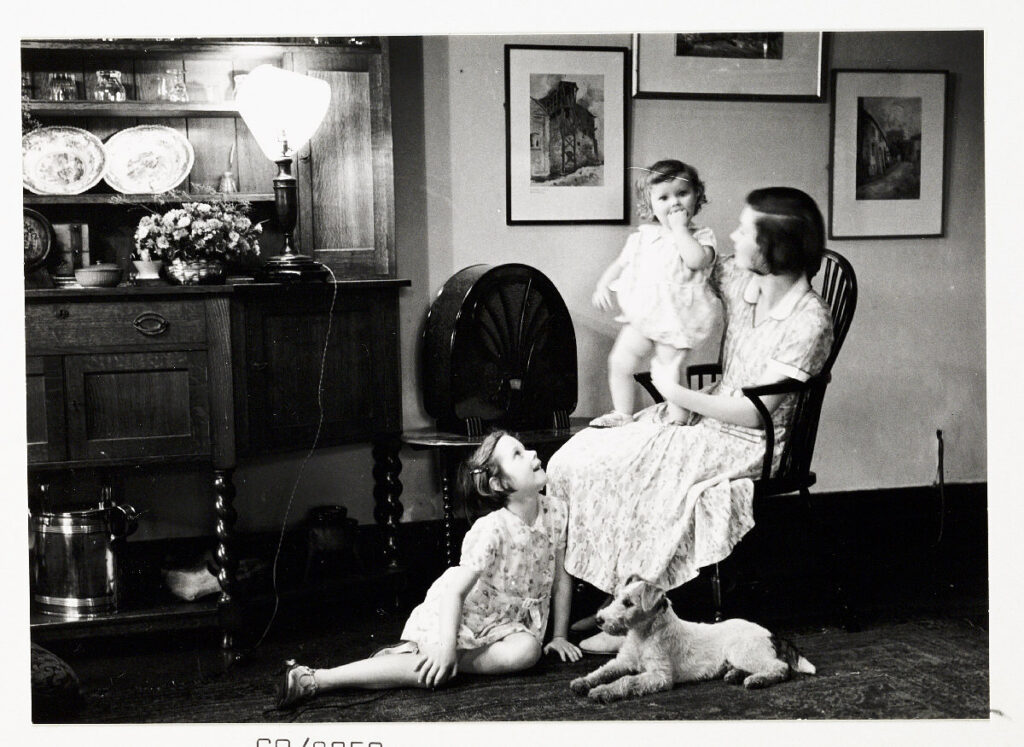Radio stations have long been a space for voices to travel across borders, classes and communities. However, throughout the history of broadcasting, women have had to fight for their voices to be heard. In this post, volunteer blogger Lauren delves into the stories of some pioneering women on the airwaves.
Radio programming for women
In May 1923, the BBC took a step into gender-targeted broadcasting with the launch of Women’s Hour (not to be confused with the Woman’s Hour on air today). This was a show designed specifically for married women at home. The show covered topics such as fashion and even politics as it created airtime for voices like former suffragist Mary Emmott to discuss ‘How Local Government Affects the Home’.
Although the show catered to traditional societal expectations of women, it also began to provide a platform for women’s voices to emerge. However, this programme was short lived and its ending in March 1924 highlighted that it wasn’t a priority for the BBC. It was not until 1946 that the still-running Woman’s Hour began, which continues to amplify discussions relating to and for a female audience.

Fired for a Yorkshire accent?
In the mid-1920’s Children’s Hour became a beloved BBC broadcast and among its presenters was librarian Maud Hummerston, who went by the affectionate on-air persona of ‘Aunty Norah’. She became a popular figure who even received fan letters from children for her engaging storytelling on the 2LS station, which operated from Lower Basinghall Street, Leeds.
However, her presence on the airwaves was halted. By 1929 the British Broadcasting Company had become the British Broadcasting Corporation, which was now funded by licence fees. Allegedly, a listener complaint stated that they “didn’t pay a licence fee to hear a Yorkshire accent”. As a result, Maud was cut from the programme. This reflects the era’s prejudices against regional accents and towards Received Pronunciation, which the BBC favoured at the time (and for many years after). Maud’s story serves as a reminder of the barriers that Northern women, and those in the regions more broadly, faced in the broadcasting industry.
Musical Prodigy
Another Yorkshire woman who challenged traditional gender roles on the air was Ivy Benson. Born in Leeds in 1913, Ivy was a musical prodigy who played the saxophone on BBC Radio’s Children’s Hour at the remarkable age of nine. Ivy went on to form and lead her own all-female band that performed at prestigious venues such as the London Palladium. Ivy was performing at a time when broadcast orchestras and big bands were heavily dominated by men, so an exclusively women’s group was viewed as unusual. Ivy and her band became a resident band for the BBC, which catapulted her to fame—and her performances only increased when conscription began during World War Two, opening more opportunities for female musicians while men were away in the armed forces.
The First Announcers
Nationally, the story of women in BBC radio has often included been one of exclusion and resistance. In 1933, Sheila Borrett briefly became the first female announcer on BBC radio—she was essentially appointed to test audience reactions to a woman in a formal radio announcing role. However, after three months, she was released from the position after the BBC received thousands of complaints, and the broadcaster did not employ another female announcer for almost a decade. The critical feedback to simply having a woman in an authoritative position highlights the sexism within society.
While broadcasting, she was referred to not by her own name but as ‘Mrs. Giles Borrett’ which was her husband’s name, a common practice at the time but one which erases her individual identity. This highlights the patriarchal norms of a time when even professional women were expected to exist in relation to their husbands. The belief that women and their voices lacked authority and autonomy would go on to limit the inclusion of women in these roles.
Despite these systemic obstacles, over the last century women have become more and more present in every area of broadcasting: as announcers, technicians, and producers. Sheila, for example, moved to the United States after the Second World War and continued to work in broadcasting until she was in her seventies. The work of women who faced prejudice were foundational in shaping broadcasting services through challenging societal expectations.
Modern Voices
Fast forward to the present day, and a new generation of women are taking their place at the microphone. Rima Ahmed, who grew up in West Yorkshire, is currently the presenter of the Breakfast Show on BBC Radio Bradford. She uses her platform to highlight women’s stories through her regular segment ‘Girl Power Hour’.
The story of women on the radio is one of resilience, innovation, and transformation. Once sidelined, women’s voices are now central to radio, which reflects decades of social change in England. As we celebrate 100 years of women on the radio, we remember those who spoke first and those who speak loudest today. Women have used the radio to speak and be heard, shaping the cultural conversation.
Excellent blog!
Well done Lauren 👍